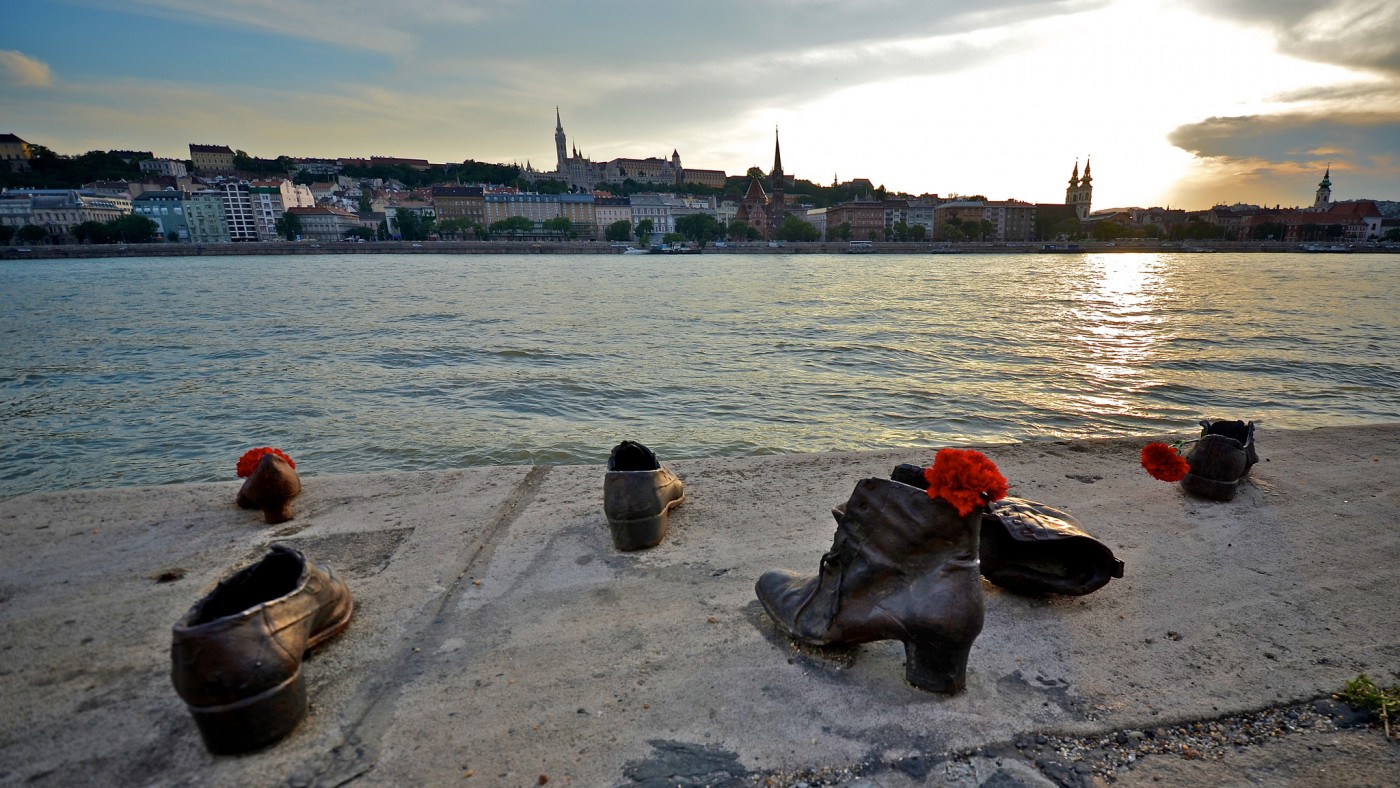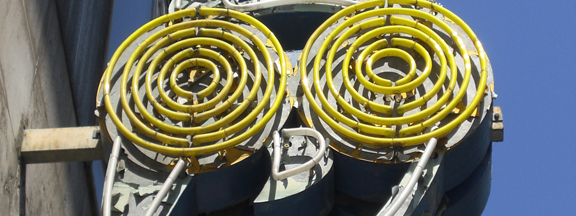 A Red Star is Reborn
A Red Star is Reborn
“Are you ready to get into the time machine?” Zsófi our tour guide said.“Look around you and we will soon discover what Budapest used to be like, but before we start what year do think it is?” she continued.Everyone in the group answered “the 50’s, 60’s or 70’s”Zsófi confirmed that “Yes, you are all correct. This was the Retro period in Budapest; the time during the great Soviet occupation of the city. There are still remnants of this period all over the city that we will soon discover.”
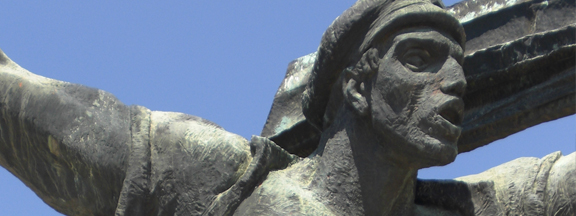
Budapest, Hungary’s capital city has really come alive after years of communist oppression, and today has a lot to offer. The city originated as two cities, Buda and Pest, divided by the Danube River and joined together to form Budapest. The two sides of the city have distinct differences, but together they create a special place that is vibrant, historical and still a bit of old world Europe.
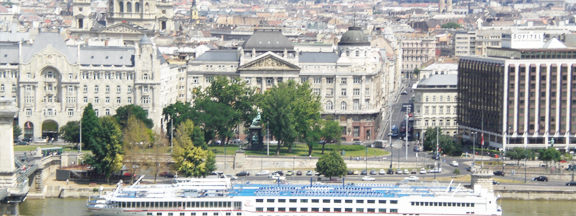
Hilly Buda, positioned at the end of the European Alps, contains Castle Hill and the famous Gellert Baths while Pest is the commercial hub which begins the flat plane continuing south all the way to Greece and Turkey. Pest is where you’ll find shopping and top restaurants that attract the café society for which the city is known. A stay on the Pest side at the Inter Continental Budapest Hotel facing the Danube and adjacent to the famous Chain Bridge is an ideal choice both for its location and luxurious amenities. The imposing post modern glass structure was recently fully renovated and offers spectacular rooms with river views.
Budapest has a history both rich and varied. The Magyars, the originators of the Hungarian language founded the city. Then the Turks took control, and they had a lasting and influential presence during the Ottoman Empire. Afterward the Hapsburgs designated the city as a focal point of the Austro-Hungarian Empire and made it the jewel in the crown of European capitals. Considering this impressive pedigree that already existed, the Communists came to the party late but they rocked the foundation of the city’s history. During the period of Soviet occupation, which ended with the fall of the iron curtain in 1989, nothing really changed in the city. However it’s this interesting cold war phase, now called the Retro Period, that fuels the city’s current vibe and as the name suggests is a step back in time.
Signposts of the Retro period are all over the city, and the best way to experience it is by taking one of the walking tours given by Unique Budapest. Each tour lasts over three hours with occasional pop quizzes and refreshment stops along the way. If you are not up to walking around the city, you can take one of the half day bus tours to get acclimated: Hop-On Hop-Off Sightseeing tour www.hoponhopoff.hu or Cityrama sightseeing tours www.cityrama.com . These two companies offer an opportunity to get your bearings while deciding where you’ll focus your efforts in terms of the sights. The personal guided tour by Unique Budapest though is a hands-down winner and you can choose from the many options they offer.
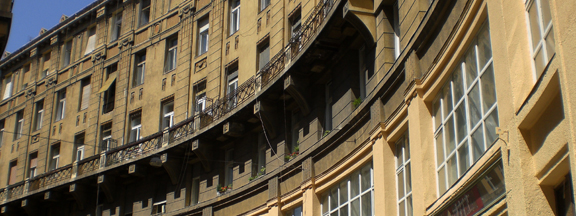
Throughout the long haul of Soviet oppression, Budapest’s citizens held on for better times and the remnants of their efforts still remain but nowhere more obvious than in the very active Jewish quarter. During the Retro period there were not many shops here but now that’s changed. With the locus centered in Király Street just adjacent to the quarter, there are shops and restaurants of all kinds now that make this charming neighborhood irresistible. From stylized eyewear at Orange Optika to home furnishings at Goa Home there is a wide variety for all shopaholics. Here and throughout much of the city, shops close on Saturday afternoon and open again Monday morning. It almost seems that capitalism is still evolving slowly and has yet to pick up speed to match European standards.
On the Buda side of the city, there is a lot to explore including the facades of the buildings that meld different periods of Hungarian history together. During the Retro period many of these buildings went into disrepair and are now just being restored. From Pest you can take a subway that drops you at Moscow Square, a beautiful public square and transit hub in the heart of Buda. During the Retro period this is where the Soviets recruited Hungarian youths to become KGB agents. The subway system still looks like its 1960 again with authentic cars built by the Soviets during the Retro period. This quirky present left to the city can take you anywhere from Pest to Buda.

Also located on Buda hill and not to be missed are the Gellert Baths. The ornately decorated hotel and spa dates back to 1918. One of the most famous statues from the Retro period (now in Memento Park) stood guard on Gellert Hill in Buda just above the landmark baths. The spa complex includes thermal baths, an Olympic size communal pool and separate private areas for men and women for therapeutic massages. A hefty 18.5 million gallons of warm thermal water spring forth daily from its 118 natural thermal springs, and the relaxing experience of soaking in the baths can calm the weary after a long day of sightseeing.
Castle Hill, close by to the Gellert baths by taxi offers a half day of sightseeing. Arrive the scenic way by crossing the popular Chain Bridge from Pest and taking the funicular up the hill. Reaching the pinnacle, visitors can experience the best views of the city anywhere along the ridge. Start at the Royal Palace which is now a museum devoted to Hungarian art. All the buildings were partially destroyed during World War II and rebuilt afterward to replicate their grandeur. Don’t miss the labyrinths under Castle Hill. This subterranean maze was used by the Nazis during the war as one of the last stands against the allies. You can tour the labyrinth and learn about the fascinating history. Also, while here stop at Hadik for lunch and try a traditional Hungarian goulash or chicken paprika. Just next door is Rusworm which is a mecca for great desserts. Try the traditional crème cake, the Hungarian version of a mille-feuille.
Located just about four miles outside the city and accessible by taxi is Memento or Statue Park, and is the climax of the Retro Period tale. When the Communist government was finally overthrown a smart businessman came forth and amassed all the statues and memorabilia that the Hungarians remembered so well, and installed them in a park. The park is arranged in four figure-eight parterres with manystatues of workers and soldiers symbolizing the Soviet principals during the Retro Period. A replica of the Stalin statue that stood on the Grandstand guards the entrance, but all traces of Stalin are gone except for his boots. These are installed across the road from an old Trabant, the Soviet -made auto deemed perfect for the Hungarians.
After a visit back in time Central Café is the perfect ending for the Retro Period tour. This coffee house dates back to 1887 when it was the center of social, cultural, and intellectual activity. During the Retro period it was closed and afterward was turned into an eatery for construction workers of the underground. Later in the 1990’s, after a brief stint as a club for the University, it operated as an amusement arcade. It then fell into disrepair until 2000, when it was bought and returned to its original splendor. Now everyone can again enjoy not only the sumptuous desserts, but also a full menu of fine cuisine that is inventive and even innovative by Budapest standards.
It’s always nice to crown a wonderful trip with a romantic experience. Dinner at Gundel, a classic restaurant that was asleep during the Retro period, will surpass your expectations. Strategically placed adjacent to City Park, this landmark’s popularity dates back to the Austro-Hungarian Empire and it is a symbol of culinary art and refined hospitality. It survived the great hardships of World War II and was then occupied by the Communists during the Retro Period. George Land, the restaurateur, and Ronald Lauder purchased it in 1992 and completely remodeled it in the original Belle Epoque style. The opulent interiors designed by Adam Tihany invoke an old-world atmosphere and the food which carefully combines traditional Hungarian cuisine with contemporary flourishes is incredible. Serving variations on the classics such as goose liver pate, veal paprika and catfish, the perfection in the execution is astounding and you’ll find yourself wondering exactly what is on your plate. On summer evenings guests dine outside in the garden and listen to live music played by an orchestra whose repertoire spans the gamut from Franz Liszt (a Hungarian) to traditional gypsy music. What a treat!
Budapest offers the traveler impressive history and culture, but the Retro Period, a time they were not proud of, is truly something that has left a lasting impression on the city. So, get into your time machine, set your watch back and let history work some magic. Experience the simple pleasures of bygone days when you head to Budapest where the red star has finally turned to gold.
[alert type=white]
The country code is +36 and the city code is 1 plus the seven digit number.
Facts about Budapest
Where to Stay
InterContinental: Newly renovated, and situated perfectly with a 360 degree view of Pest and the Danube River. The hotel features the club lounge on the 1st floor, and rooms that can accommodate weddings and conferences. This property also has a world class spa offering massages and facials. Corso restaurant features interior and exterior dinning with a view of the Chain bride and Buda. Apaczai Csere J. u. 12-14 1052 Budapest, Hungary.; Tel. 327 6333; www.budapest.intercontinental.com
Four Seasons Gresham Palace: This Art Nouveau structure is known for its mix of high finance and bohemia. Its evolution is a fascinating tale, tracing course from life insurance company and prestige residence during to communist-era housing, now culminating into a luxury hotel by the Four Seasons. Glass mosaics and stain glass windows adorn the lobby which is breathtaking. The hotel is located on the Danube just across from the famous chain bridge. Roosevelt Ter 5-6; Tel. 268-6000; www.fourseasons.com
New York Palace: The contemporary New York Palace is the rethinking of the original edifice built in 1894 using the creative ideas of Maurizio Papiri. The building has an eclectic style relying on the Italian Renaissance however the unique interiors especially the inner spaces have created one of the most dignified hotels within the Boscolo Group. The hotel contains a spa and gym. Erzsébet krt. 9-11; Tel: 886-6111; www.boscolohotels.com
Regency Suites: In the heart of the city with the biggest rooms in town. H-1075 Budapest Madách Imre tér 2. 36 801 6300. www.regencysuites.hu
Where to Eat
Gundel: This classic restaurant was purchased by Ronald Lauder and has undergone an extensive renovation. In summer patrons are treated to dining alfresco with Gyorgy Lakatos and his band playing love music. Allakerti Ut 2; Tel. 363 1917; www.gundel.hu
Mokka Café & Restaurant: Has a unique ethnocentric menu with a wide selection of wines and is located in the heart of the city near the Basilica. Delicious entrees ranging from swordfish carpaccio to wild boar saddle fillet with quince. Sas u. 4; Tel. 328 0081;www.makkarestaurant.hu
Hadik: Traditional Hungarian dishes with reasonable prices and great service. One of the few restaurants on Buda’s Castle Hill. This is a real Retro canteen with the option of eating outdoors. Szentharomsag u. 9-11; Tel. 225 86 68
Donatella’s Kitchen: Newly opened on Kiraly street, this Italian bistro serves up modern Italian fare with late night dining, and great pizza. Kiraly U. 30-32; Tel. 878 0515; www.donatellaskitchen.com
Central Café: Offering a myriad of choices of modern Hungarian cuisine, this classic coffee house was recently reopened with a full menu. The opulent décor has been restored to pre-Retro period splendor. Karolyi Mihaly u. 9; Tel. 266 2110; www.centralkavehaz.hu
Ruswurm Confectionery: The best pastry shop in the city. Szentháromság u. 7; Tel. 3755-284
Spoon Café & Lounge: The first restaurant installed on a boat and opened for 6 years with a Chinese cook, a sushi chef and open every night until 12 a.m. (even Christmas). Café with terrace, lounge with terrace, oriental bar. Menu changes seasonally. 1052 Budapest, Vigado ter 3 dock. Tel. 411 0933, www.spooncafe.hu
Szimpla Café: Simple place to grab a beer at a fun, unique bar. The restaurant used donated materials from the retro period. VII. Ker. Kertesz u. 48., www.szimpla.hu
Where to Shop
Tisza: Since the resurrection of the classic Hungarian sports brand in 2003, Tisza is the place to shop for the latest sneakers and street wear fashions. Check out their t-shirt collection by Tisza’s brand new designer team. Located at Astoria shops. Karoly korut 1; Tel. 266 3055
Orange Optika:Find the glasses that suit your personality at Orange. With original frames from famous designers all over the world, Orange is also the exclusive retailer of the Hungarian design brand Tipton. Kiraly utca 38; Tel. 249 2931; www.orangeoptika.hu
Le Parfum: Haute Parfumerie and custom fragrance showroom. Have an expert guide choose the most personal fragrance from a selection of the world’s finest niche fragrance brands or just have one created for you. You can even smell the famous Hungarian Queen water dating back to the 14th century. Cukor Utca 1; +36 06 30 4700 248; www.leparfum.hu
Must See
Memento Park: Someone had the great idea of putting the statues of Communist dictators all in one park. Gigantic statues and spectacular displays make for a powerful and memorable exhibition. This open air museum is definitely one you shouldn’t miss. Open daily from 10 a.m. until sunset. 22nd district (Southern Buda), corner of Balatoni ut and Szabadkai ut; www.mementopark.hu
Labyrinth: One of the world’s 7 underground wonders. You can tour these mazes, located under Castle Hill that were used by the Nazi’s in World War II as one of the last stands against the Allies. Uri utca 9; Tel: 489 3281, or 212 0287; www.labirintus.com
[/alert]

